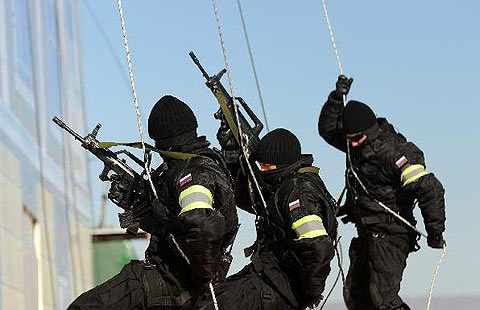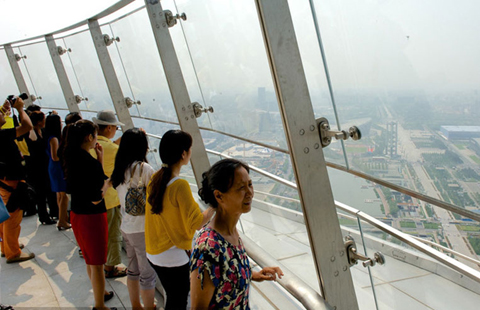The ancient army That's still growing
Updated: 2014-10-22 07:48
By Zhao Xu and Lu Hongyan(China Daily)
|
||||||||
As China celebrates 40 years since the Terracotta Warriors were unearthed, recent developments have deepened the mystique, as Zhao Xu and Lu Hongyan report from Xi'an.
In the eyes of Gang Gang, a 13-year-old with autism from the northwestern Chinese city of Xi'an, his hometown's most recognized symbols, the Terracotta Warriors of the Qin Dynasty (221-206 BC) army, aren't just the monochrome sandy yellow figures visible to most observers.
"He stared at what lay in front of his eyes in a way a 3-year-old would at a new toy. That lasted a few seconds, before he ran forward, pressed himself against the railing that separated him from the soldiers in the pit and stretched out an arm," said Ma Lingzhi, a museum guide who watched the youngster's first encounter with the 2,000-year-old clay-based figures.
"He didn't say much, but he must have a miraculous vision of his muted dolls," she said. "When asked to paint a soldier at the end of the tour, he painted a figure in a rainbow of colors on the sheet of paper."
Gang Gang was among 169 students from a local special needs school who toured the World Heritage site on Oct 15. "The accompanying parents were overwhelmed by the kids' excitement. That's something they rarely see," Ma said.
"In the case of that child, what he conjured up is actually not so far from the reality," the 40-year-old added in reference to the fact that the famous martial figures were originally covered by layers of dazzling colors.
"It sounds unbelievable, but when one's life path intersects with that of the warriors, something unexpected is destined to happen," Ma said.
History unearthed
Yang Zhifa, a local farm worker who, by pure chance, allowed the first rays of light to strike the underground army for millennia, would agree with Ma's assertion.
As he and two other villagers were digging a well on a chilly spring day 40 years ago, the then 36-year-old Yang's spade bounced off the head of a buried warrior. Today, the hoe he wielded on that fateful day is framed and hanging proudly on the wall of his sitting room.
The army was assembled for Ying Zheng, also known as Qin Shi Huang, or "The First Emperor of the Qin Dynasty". Upon ascending the throne at the age of 13, the boy emperor immediately embarked on a seemingly unstoppable quest for greatness - both in this world and the next.
By the time he died, in around 210 BC at the age of 50, he had united China, and standardized the national writing system, as well as the units of currency and measurement. He was also responsible for the construction of some of the first sections of the Great Wall, and a fabled sunken mausoleum, buried under a huge mound of earth, whose ground plan is believed to have been an accurate depiction of China and included rivers of flowing mercury. Understandably, the emperor deployed a formidable underground army to safeguard his magnificent tomb.
The warriors were the final piece of a jigsaw. More than 700,000 laborers worked for 38 years to complete the task, and - somehow appropriately - its end sounded the death knell of an empire many thought undefeatable. The Qin Dynasty collapsed a mere four years after Ying Zheng's death.
'The end of the beginning'
"If the completion of the Terracotta Army - although, some say it was never completed - can be seen as the beginning of the end for the empire, then its discovery was indeed the end of the beginning for us," said Xia Yin, a conservationist from the Qin Shi Huang Mausoleum Museum.
"What our ancestors spent three decades building will take us forever to decipher."
In Pit 1, the largest of the four pits that house the terracotta troops, soldiers are lined up in battle formation across an area the size of two football fields. The soldiers stand on well-baked pottery bricks sturdy enough to sustain the figures, which weigh an average 200 kilos each. A wooden ceiling that once sheltered the warriors rotted away hundreds of years ago, along with the large beams that supported it and the rammed earth that was laid on top.
"All the wooden sections have been reduced to dust by the grind of time, but sometimes, absence is felt more acutely than presence," said Pan Ying, a 28-year-old museum guide, pointing to impressions left in the earth by the wheels of long-gone wooden chariots, and the undulating earth that avalanched into the pit when the rafters gave way, completely covering many of the terracotta figures.
The museum has restored and displayed about 1,200 of the estimated 6,000 warriors in Pit 1. But the mystery surrounding the army has been deepened, not lessened, by the artifacts that have been unveiled, according to Pan.
"Artistry is by no means compromised by scale. If you zoom in on the individual soldiers, you'll see each one has distinct facial features and expressions," Pan said.
Unique details
The craftsmen who made the warriors are believed to have modeled the figures on one another, to ensure uniqueness. The details even extend to the locks of hair, fingernails, palm lines, and the soles of their sandals, whose dimpled patterns appear remarkable similar to those seen on the soles of modern sneakers.
Rather than displaying a ferocious streak, collectively the soldiers appear to be in a trance, the contemplative ecstasy in which a conquering army finds itself on the eve of a decisive battle.
From a warrior's flared nostrils and tightened lips, to a horse's raised ears and wind-parted mane, everything points to an impending fate.
Today, the scene is nothing like it was in the first few years of research that followed that 1974 spring. "One discovery led to another. We felt both thrilled and ill prepared," said Yuan Zhongyi, the leader of the site's first archaeological team, comprising 10 members, who is known as "the father of the Terracotta Warriors".
"The construction of the giant roof, which today houses the entire Pit 1, was undertaken between 1976 and 1979, the year the museum officially opened to the public," the 82-year-old recalled. "Before the roof, we lived on the site in tents and conducted our excavation work in the open. I remember being woken at midnight by lashing rain, and running outside and calling out to everybody. Using plastic sheets and straw mats, we launched a desperate attempt to rescue our silent friends.
"Thanks to those days, I never forget to check the weather," he said.
For Zhou Tie, the museum's lead conservationist, other challenges proved far more daunting. "If you can believe it, the monochrome army we see today was swathed in vibrant hues when the soldiers were first born," he said. "Colors extracted mostly from natural materials, including semiprecious stones and animal bones, were applied over a layer of lacquer that coated the pottery figures."
The breakthrough
Many of the colors were lost, either in a suspected arson attack by peasant forces at the empire's demise, or during the army's 2,000-year subterranean sojourn. The sections that survived fire and age were probably ruined by Xi'an's arid atmosphere when they were uncovered during the excavation.
"When fully exposed to dry air, the lacquer begins to curl after about 15 seconds and flakes off in about four minutes, permanently taking the precious traces of crimson, purple and white with it," Zhou said.
"Between the early 1980s and the mid-90s, we tried everything we could to retain the moisture inside the lacquer layer and stabilize it, but in vain."
The breakthrough came around 1995, when the team decided to experiment with a material used in the preservation of ancient lacquer furniture. "It's a zillion times more complicated than it sounds," Zhou said, adding that the many failures on the road to success had been an emotional roller coaster.
"'Breakthrough' may not be the right word. In research and protection, we only move forward by an inch a day," the 56-year-old said.
Some of the newly restored warriors will be on show at the museum until March, as part of an exhibition called, "Terracotta Warriors: True Colors". In a sparsely decorated, dimly lit hall, the faint colors - be it a blush on the cheek or a swirl on a hemline - are illuminated by spotlights, and they tell a long-forgotten story. The face of one figure, believed to represent an army sorcerer, bears a distinct green tint. It's a place where history can echo in a child's imagination.
Famous visitors
The warriors never fail to impress and inspire, and to work at the museum is to find oneself a witness to many historic and private moments, according to He Hong, who first visited as a teenage girl in 1982, before becoming a museum guide 28 years ago.
"On Oct 16, 1986, two months into my work, I saw Elizabeth II, Queen of the United Kingdom. I will never forget her apple-green suit and matching gloves - it was one court meeting another court," she said.
Over the years, many world leaders and luminaries have visited the site, among them former US president Jimmy Carter. "Mr Carter has come twice; in 1981, and again in September this year," He said. "When he was here six weeks ago, he was spotted by fellow American tourists who gathered at the square outside of the exhibition halls, waved their hands and sang 'Happy Birthday'. Mr Carter, who would turn 90 on Oct 1, was visibly moved."
Other memories are tinged with sadness. In October 2007, Sonia Gandhi, president of the Indian National Congress Party, visited the museum. She was following in the footsteps of her late husband, the former prime minister of India, Rajiv Gandhi, who saw the warriors in 1988, three years before he was assassinated.
"Before she left, we presented her with a special gift: a handwritten piece by Mr Gandhi, describing his thoughts at seeing the colossal site, which was given to the museum at the end of his visit," He said. "The way Mrs Gandhi contemplated that piece of paper reminded me of another person: a man who had visited the museum a few years before, and had stood beside Pit 1 for hours holding a photo of his late wife.
"He told me that his wife had died in a car accident two years before, on the eve of their planned tour of the museum," the 45-year-old continued. "That gentleman may live in a different world to Mrs Gandhi, but in reliving the memories of their loved ones, they share an intense moment that transcends time."
For Xia Yin, the conservationist, "time" is the key word because it represents a major contradiction in his life. "When you are separated by more than two millennia from something you try to understand almost every single minute of your waking hours, you feel both the flow and the stillness of time," the 41-year-old said.
"The small inroads we have made into this gigantic historical conundrum over the past 40 years serve as a constant reminder of how quickly the time has elapsed. On the other hand, when you are out there piecing together a once-towering soldier from many broken shards, you are insulated from your surroundings, unaware of the passage of time."
Yuan Zhongyi still goes to the excavation site in Pit 1 once every week, where right behind the rows of restored soldiers, archeologists stoop over what appear to be warriors' torsos or limbs carefully brushing away the dust of two millennia.
'One last look'
For obvious reasons, most visitors are not allowed to enter the pit, but there have been exceptions. "Once, we had a group of visually impaired people at the museum, and we let them 'feel' the warriors, literally," He said.
Another person who had close contact with the warriors is Henry Kissinger, former US Secretary of State and a key player in Sino-US relations for four decades.
"Since 1979, the doctor has been here five times. The last time he came, in June last year, he was with his wife, daughter-in-law, and two grandchildren," He said. "When we offered him the chance to go into the pit, he was absolutely thrilled, and asked earnestly: "Can my family come with me?'
"When he gazed into the eyes of a warrior it was a moment to behold: a dialogue between two men, both historic figures in their own rights, and a dialogue between civilizations," she said.
It was a hot summer day and the lack of air conditioning meant the exhibition hall was stiflingly hot. After his visit, the elderly statesman was helped to the corridor, where a breeze plays, and helped into a wheelchair.
"The way the wheelchair was placed meant the doctor was facing away from the giant showroom's exit door, through which one can still catch a glimpse of the warriors," He recalled. "The 90-year-old looked up at the museum guide beside him and said, 'Turn me round. I want to have one last look'."
Contact the writers at zhaoxu@chinadaily.com.cn and luhongyan@chinadaily.com.cn
(China Daily 10/22/2014 page6)
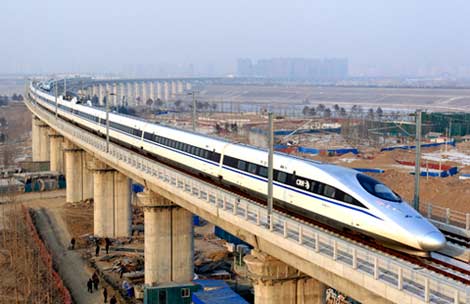
 Chinese may go after California high-speed rail project
Chinese may go after California high-speed rail project
 US-China solar pact holds big potential: Analyst
US-China solar pact holds big potential: Analyst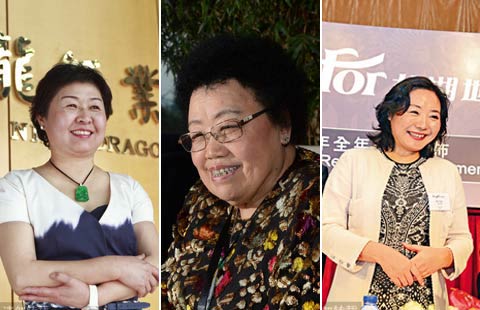
 Top 10 richest women in China
Top 10 richest women in China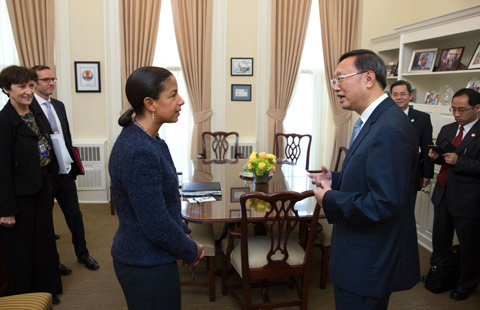
 Yang Jiechi meets with US National Security Advisor
Yang Jiechi meets with US National Security Advisor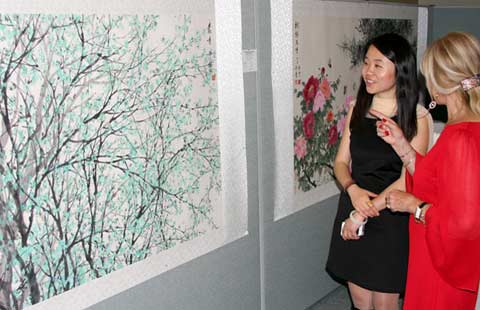
 Chinese power couple's art on display at UN
Chinese power couple's art on display at UN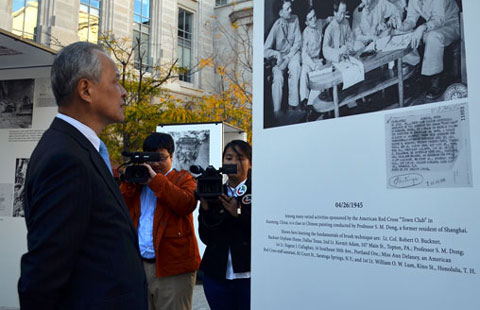
 Cui Tiankai visits exhibition on WWII
Cui Tiankai visits exhibition on WWII
 The capital's biggest pizza party
The capital's biggest pizza party
 Lenses on wedding: From me to us
Lenses on wedding: From me to us
Most Viewed
Editor's Picks

|

|

|

|
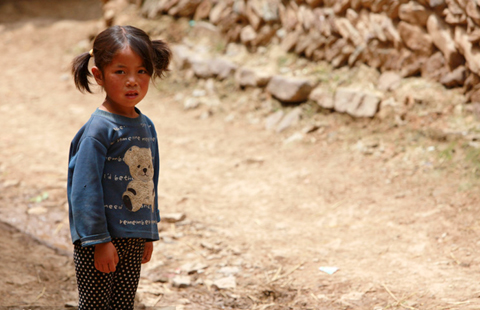
|

|
Today's Top News
Chinese may go after California high-speed rail project
US-China solar pact holds big potential
Li upbeat despite economic slowdown
Students warned of online encounters
China to fund non-profit art performance
US, China co-op to train future Afghani diplomats
Priceless Chinese scroll may be gone
Alibaba digs 'deep' in mobile search deal, calling it critical piece
US Weekly

|

|


